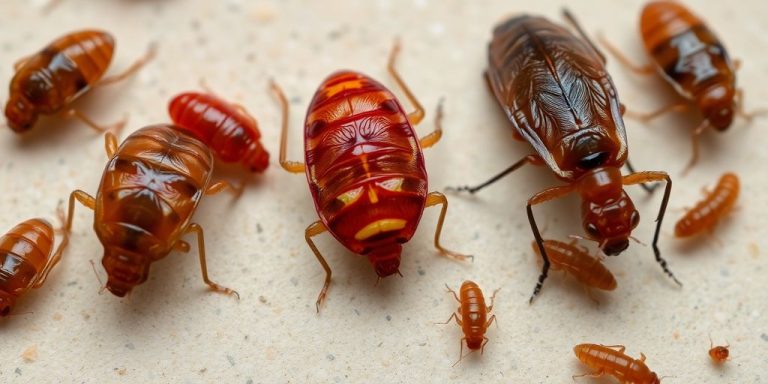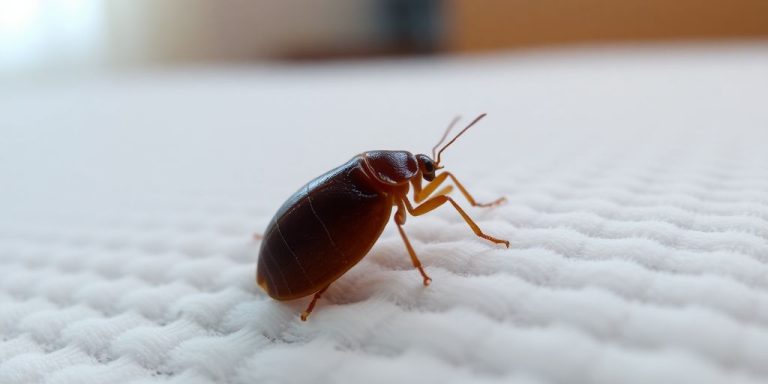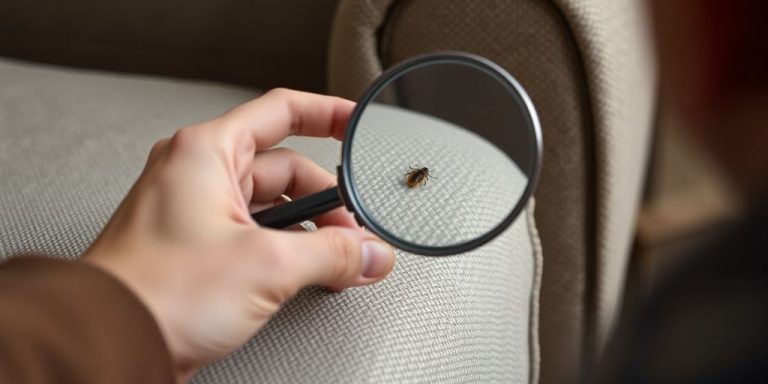Termites can cause serious damage to homes if not controlled effectively. Understanding the best strategies for local termite control is essential for homeowners to protect their properties. This article covers various aspects of termite management, including treatment methods, preventive measures, and the importance of local expertise.
Key Takeaways
- Local termite control is crucial for effectively managing infestations and protecting homes.
- Understanding the specific termite species in your area helps tailor control strategies.
- Chemical treatments, bait systems, and eco-friendly options are effective methods for termite control.
- Regular inspections and maintenance are key to preventing termite reinfestation.
- Hiring professionals can provide expertise and ensure safety during treatment procedures.
Understanding Local Termite Control
Importance of Local Expertise
When it comes to termite control, having local knowledge is essential. Local experts understand the specific conditions in your area, including the types of termites that are common and the best methods to combat them. This expertise can lead to more effective treatments and better protection for your home.
Common Termite Species in Your Area
Different regions have different termite species. Here are some common ones:
- Subterranean Termites: Often found underground, they can cause significant damage to homes.
- Drywood Termites: These termites live in the wood they consume and can be harder to detect.
- Dampwood Termites: They prefer moist wood and are often found in decaying trees or wood structures.
Tailored Solutions for Local Conditions
To effectively manage termite issues, it’s important to use solutions that are tailored to your local environment. Here are some strategies:
- Regular Inspections: Schedule inspections to catch infestations early.
- Moisture Control: Keep your home dry to deter termites.
- Use of Barriers: Install physical barriers to prevent termites from entering your home.
Understanding the local termite situation can help you take proactive steps to protect your home. Acting early can save you from costly repairs later on.
Top Termite Treatment Methods

Chemical Treatments and Their Effectiveness
Chemical treatments are a common way to manage termite infestations. They usually involve applying termite-killing substances, known as termiticides, either in liquid form or as bait. Liquid termiticides create a barrier around your home, preventing termites from entering. Bait systems, on the other hand, use materials that attract termites and contain slow-acting insecticides. Here’s a quick comparison of some popular chemical treatments:
| Treatment Type | Active Ingredient | Effectiveness | Application Method |
|---|---|---|---|
| Liquid Termiticide | Fipronil | Long-lasting barrier | Soil application |
| Bait System | Imidacloprid | Colony elimination | Bait stations |
| Wood Treatment | Borate | Prevents wood damage | Direct application |
Baiting Systems for Long-Term Control
Baiting systems are an effective way to control termites over time. These systems consist of bait stations placed around your home. The bait is made of cellulose, which termites love. When they eat it, they also consume the insecticide, which helps eliminate the entire colony. Here are some benefits of using bait systems:
- Long-term control of termite populations.
- Minimal disruption to your property.
- Environmentally friendly options available.
Eco-Friendly and Natural Alternatives
For those looking for natural solutions, there are eco-friendly alternatives to traditional chemical treatments. These methods can be effective and safer for the environment. Some options include:
- Diatomaceous earth: A natural powder that kills termites by dehydrating them.
- Nematodes: Beneficial microscopic worms that attack and kill termites.
- Essential oils: Certain oils, like orange oil, can repel termites and disrupt their life cycle.
Using a combination of methods often yields the best results. Regular inspections and maintenance are key to keeping your home safe from termites. Stay proactive to avoid costly repairs later on!
Preventive Measures for Termite Control

Construction Techniques and Materials
When building or renovating your home, consider using termite-resistant materials. This includes:
- Pressure-treated wood
- Termite-resistant coatings
- Composite materials
These materials can help keep termites away and protect your home for years to come. Creating physical barriers during construction, like using stainless steel mesh or sand barriers, can also deter termites from entering your home.
Moisture Control Strategies
Moisture is a major attractor for termites. To keep your home dry:
- Fix leaks in plumbing and roofs immediately.
- Ensure proper ventilation in areas prone to humidity, like basements and attics.
- Improve drainage around your property to prevent water pooling.
By controlling moisture, you can make your home less appealing to termites.
Landscaping Tips to Deter Termites
Proper landscaping can help keep termites away. Here are some tips:
- Remove dead trees and wood debris from your yard.
- Avoid excessive mulching near your home.
- Trim trees and bushes to maintain good airflow around your foundation.
Keeping your yard clean and well-maintained can significantly reduce the risk of termite infestations.
By implementing these preventive measures, you can create an environment that is less inviting to termites and protect your home effectively. Remember, regular maintenance and monitoring are key to long-term success in termite control!
Professional vs. DIY Termite Control

When dealing with termites, homeowners often face the choice between doing it themselves (DIY) or hiring professionals. Each option has its own benefits and drawbacks, and understanding these can help you make the best decision for your situation.
Benefits of Hiring Professionals
- Expertise: Professionals know how to identify different termite species and locate their colonies.
- Effective Treatments: They use powerful treatments that are often more effective than store-bought options.
- Long-Term Solutions: Professionals can provide ongoing monitoring and follow-up treatments to ensure termites don’t return.
Limitations of DIY Methods
While DIY termite control can save money, it has its downsides:
- Misidentification: Homeowners may not correctly identify the type of termite or the extent of the problem.
- Limited Effectiveness: Many DIY products are not as strong as professional treatments, leading to possible reinfestation.
- Safety Risks: Improper use of chemicals can be dangerous to health and the environment.
Cost Comparison and Considerations
Here’s a quick look at the costs associated with both options:
| Method | Average Cost | Effectiveness |
|---|---|---|
| DIY | $50 – $200 | Moderate |
| Professional | $500 – $3,000+ | High |
In summary, while DIY methods may work for minor issues, hiring professionals is often the best choice for serious infestations. Their expertise and tools can save you time and money in the long run, ensuring your home stays safe from termites.
Post-Treatment Measures and Monitoring
After you have treated your home for termites, it’s important to keep an eye on things to make sure they don’t come back. Here are some key steps to follow:
Regular Inspections and Maintenance
- Check your home regularly for any signs of termite activity, even after treatment.
- Look in areas that are often damp, like basements and attics.
- Watch for mud tubes, discarded wings, or any damage to wood.
Signs of Reinfestation to Watch For
- Be alert for new mud tubes or frass (termite droppings).
- Notice any new damage to wooden structures.
- Keep an eye out for any unusual activity around your home.
Long-Term Prevention Strategies
- Repair and Seal: Fix any leaks or cracks in your home to keep moisture away.
- Remove Wood-to-Soil Contact: Use barriers to prevent wood from touching the soil.
- Consider Professional Help: Engage a pest control service like Flatline Pest Control for ongoing monitoring and support.
Regular monitoring is essential to ensure that your home remains safe from termites. By being proactive, you can protect your investment and maintain a pest-free environment.
Safety and Precautions in Termite Control

When dealing with termite control, it’s essential to prioritize safety. Understanding the risks associated with chemicals used in treatments can help protect both homeowners and professionals.
Handling Termiticides Safely
- Always wear protective gear, including gloves, masks, and goggles, when using termiticides. This minimizes direct contact with harmful substances.
- Ensure proper ventilation by opening windows and using fans to disperse any chemical fumes.
- Restrict access to treated areas to prevent accidental exposure, especially for children and pets.
Protective Gear and Equipment
Using the right protective gear is crucial:
- Gloves: Protect your hands from chemicals.
- Masks: Prevent inhalation of harmful fumes.
- Goggles: Shield your eyes from splashes.
Environmental Considerations
- Be aware of the potential impact of chemicals on the environment. Always follow the manufacturer’s instructions for safe application.
- Consider using eco-friendly alternatives when possible to minimize environmental harm.
Taking the right precautions during termite control not only protects your health but also ensures effective treatment. Always prioritize safety to avoid unnecessary risks.
Conclusion
In conclusion, knowing how to effectively manage termites is key to keeping your home safe from these harmful pests. Whether you choose liquid treatments, bait systems, or wood treatments, each option has its own benefits and is useful in different situations. It’s important to consult with a pest control expert to find the best solution for your home. Remember, catching termite problems early and taking preventive steps is the best way to avoid expensive repairs later. By staying informed and proactive, you can protect your home from these silent threats. If you need help, don’t hesitate to reach out to local pest control services for advice and assistance.
Frequently Asked Questions
What are the signs of a termite infestation?
Look for mud tubes, discarded wings, or damage to wood. If you notice these signs, it might mean termites are nearby.
How can I prevent termites from entering my home?
Keep wood away from soil, fix leaks, and ensure good drainage around your house. Regular inspections can also help.
Are professional termite treatments worth the cost?
Yes, professionals have the right tools and experience to effectively deal with termites, often preventing more damage in the long run.
What should I do if I find termites in my home?
Act quickly! You can try DIY methods, but it’s often best to call a pest control expert to handle the situation.
How often should I have my home inspected for termites?
It’s good to have a termite inspection at least once a year to catch any problems early.
Are there eco-friendly options for termite control?
Yes, there are natural treatments available that can help manage termites without harmful chemicals.



